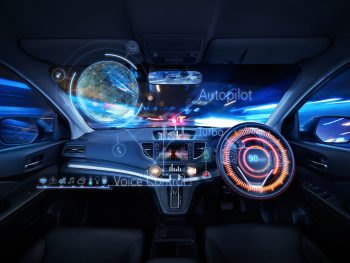‘Clear risks’ from stealth arrival of semi-autonomous vehicles
Fleets need to start thinking now about the introduction of semi-autonomous driving tech to ensure drivers are aware of such features and know how to use them.

The AFP says fleets should be both looking at the possibilities of such assisted technologies and also thinking about infrastructure to ensure their safe use
The Association of Fleet Professionals said that while it was becoming clear the promise of entirely self-driving cars was “unlikely to materialise in the near future”, new assisted driver technology was very much on its way.
Paul Hollick, chair at the industry body, added that some fleets already operated vehicles with level 2 autonomy, such as lane changing and self-parking systems, and level 3, which would allow fully automatic driving on some roads such as motorways as long as the driver was ready to take control if needed, was not far away from production models – meaning “there is a chance they may arrive on your fleet almost by stealth”.
And he said that fleets should be both looking at the possibilities of such systems and also thinking about infrastructure to ensure their safe use.
He outlined: “The UK appears to be more liberal than some other countries in terms of allowing this technology to be used on public roads, so there is a chance that we may effectively be asked to become early adopters – with both the risks and rewards that brings.”
Hollick warned that fleets absolutely should start thinking about how they view these levels of assistance.
“Essentially, they rely on the driver intervening if the technology fails but it is all too easy to envisage situations where this handover does not happen. There needs to be serious examination of the risk management and Duty of Care implications.”
He continued: “You need to know if vehicles with these levels of autonomy are being used on your fleet and ensure that drivers are familiar with the technology and how it works. There are very clear risks.”
But he also warned that such vehicles could offer potential advantages in terms of reducing driver stress and cutting accident rates.
“These assisted forms of driving could prove to be valuable in terms of the benefits they bring. They just need to be properly managed within a framework where drivers understand the limitations and their responsibilities as an employee and road user.”
Hollick added that there were other intriguing possibilities that autonomous technology provided, such as the ability for fleets to access services that use remote driving.
“Our Future Mobility Committee recently saw a presentation from Fetch, which plans to use remote driving to deliver car club-style services, with trials underway in Milton Keynes. It’s early days for this kind of tech but the potential is considerable.”
There are also a very wide range of potential fleet applications; such as being able to deliver hire cars at short notice without the need for a delivery driver to be present, which would open up pay-on-use car services to a much wider audience.
“Certainly, remote driving appears to solve many of the problems inherent in higher levels of autonomy while delivering some of the most important advantages,” he summed up.












